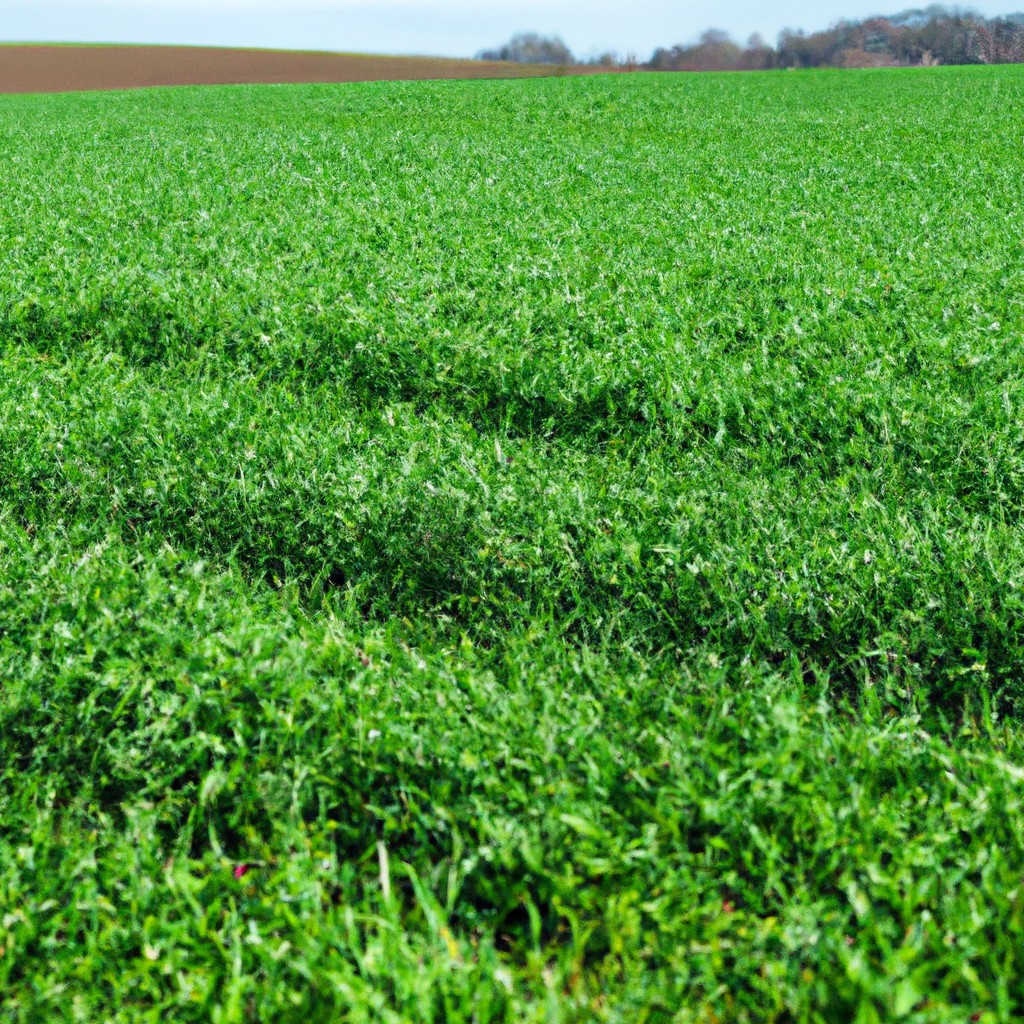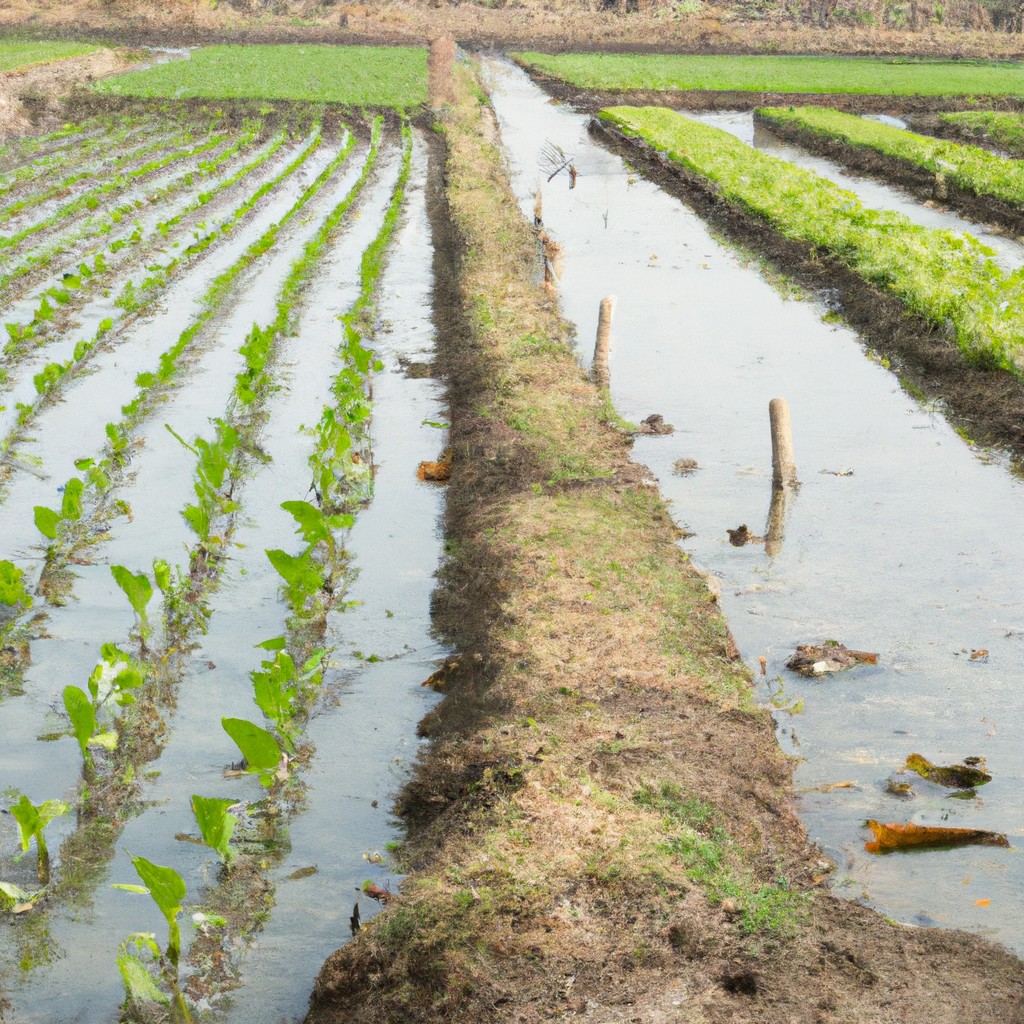Intensive farming practices focus on maximizing output from crops and livestock through methods that often require careful management of inputs like fertilizers, water, and space.
Look Inside:
Intensive Farming Definition

Intensive farming, also known as industrial or high-input farming, focuses on maximizing yield from a given land area through various means such as mechanization, high levels of inputs like synthetic fertilizers and pesticides, and selective breeding of livestock and crops. This agricultural model capitalizes on economies of scale, aiming to produce food in large quantities at a lower cost per unit.
- Some key characteristics of intensive farming include:
- Use of advanced technology for planting, harvesting, and managing livestock.
- Reliance on monocultures, where single crop species are grown over large areas year after year.
- Application of chemical fertilizers to replenish soil nutrients that are lost through continuous cultivation.
- Employment of pesticides and herbicides to manage weeds, insects, and other pests that can thrive in densely planted environments.
- Implementation of controlled environmental conditions for animal rearing, such as concentrated animal feeding operations (CAFOs), which increase production efficiency.
By leveraging these strategies, intensive farming systems aim to optimize productivity and cater to the increasing global demand for food.
Environmental Impact
Intensive farming practices have significant implications for the environment. The high use of synthetic fertilizers leads to nitrogen and phosphorous runoff, contributing to water pollution and eutrophication in aquatic ecosystems. This phenomenon causes algae blooms that deplete oxygen in the water, harming fish and other marine life.
The methodology also relies heavily on pesticides and herbicides, which can contaminate soil and water, impacting biodiversity. Beneficial insects, birds, and other wildlife are often collateral damage in the quest to protect crops from pests and weeds.
Moreover, intensive farming typically involves monoculture—the cultivation of a single crop over a wide area. This approach diminishes biodiversity and can lead to soil degradation. As soil quality worsens, it loses its ability to sequester carbon effectively, exacerbating climate change.
Water use is another concern. Intensive farming often requires substantial irrigation, leading to water scarcity in some regions. With agriculture consuming approximately 70% of the planet’s accessible freshwater, the efficiency of water use becomes critical.
Lastly, intensive livestock farming adds to environmental stress. Large-scale animal husbandry operations produce significant amounts of greenhouse gases, including methane, a potent contributor to climate change. Additionally, the concentration of animal waste can pollute local water resources and emit harmful levels of ammonia and nitrous oxide.
Human Health
Intensive farming practices often lead to the increased use of agrochemicals, such as pesticides and fertilizers, which can have significant implications for human health. Pesticide residue can remain on produce and be ingested, potentially leading to health issues such as neurological problems, hormonal imbalances, and even certain cancers. The misuse or overuse of antibiotics in livestock, aimed at promoting growth and preventing disease, contributes to the development of antibiotic-resistant bacteria. This presents a serious challenge to human medicine, as it can render certain medications ineffective for treating bacterial infections.
Moreover, the nutritional quality of food can be compromised in intensive farming systems. For example, fruits and vegetables might lack essential micronutrients due to being grown in depleted soils. Additionally, animal products from stressed or tightly confined animals may also differ in their fatty acid profiles, influencing the nutritional value and potential health effects when consumed.
Sustainable farming approaches seek to minimize these health risks by reducing chemical inputs, adopting integrated pest management, and ensuring a balanced approach to animal husbandry. Prioritizing soil health and biodiversity also leads to the production of more nutrient-dense foods, directly benefiting human health.
Alternatives to Industrial Agriculture
Regenerative agriculture is gaining traction as an alternative, focusing on renewing soil health through practices such as crop rotation, cover cropping, and reduced tillage. This approach aims to create a self-sustaining cycle that enhances biodiversity and resilience.
Permaculture is a system of agricultural principles and practices that seeks to mimic the patterns of natural ecosystems, creating sustainable and self-sufficient landscapes.
Organic farming eschews the use of synthetic fertilizers and pesticides, relying on natural processes and inputs to maintain soil fertility and pest control.
Agroforestry integrates trees and shrubs into agricultural systems, offering a multifunctional approach that can increase biodiversity, combat erosion, and improve water quality.
Urban agriculture demonstrates how food production can be integrated into urban settings, utilizing rooftops, balconies, and vacant lots to grow crops, which reduces food miles and improves access to fresh produce.
Community-supported agriculture (CSA) builds relationships between farmers and consumers, encouraging local production and consumption through shared risks and benefits.
Each of these alternatives demonstrates a commitment to healthier ecosystems and communities, highlighting the importance of diversity and sustainability in our agricultural practices.
Intensive Versus Extensive Agriculture
Intensive agriculture, also known as industrial or high-input farming, focuses on maximizing productivity from a given land area. This approach depends heavily on synthetic fertilizers, pesticides, and irrigation systems to boost yields. It often involves monocultures where a single crop is grown on a large scale, requiring more chemical inputs to manage pests and diseases that proliferate in these conditions.
In contrast, extensive agriculture is characterized by a lower dependency on chemical inputs and energy. It emphasizes the use of natural resources and allows for a greater balance with local ecosystems. Extensive farming practices include rotating crops to enrich the soil, integrating livestock to recycle nutrients, and diversifying plant species to build resilience against pests.
While intensive farming is designed to produce high yields in the short term, it can lead to soil degradation, water scarcity, and biodiversity loss. Extensive farming strategies often promote environmental health and long-term sustainability, but typically produce lower yields and may require more land to produce the same amount of food as intensive methods.
The choice between intensive and extensive farming methods is complex, influenced by economic, environmental, and social factors. The global challenge is finding a balance that preserves ecosystems while providing enough food for a growing population.




